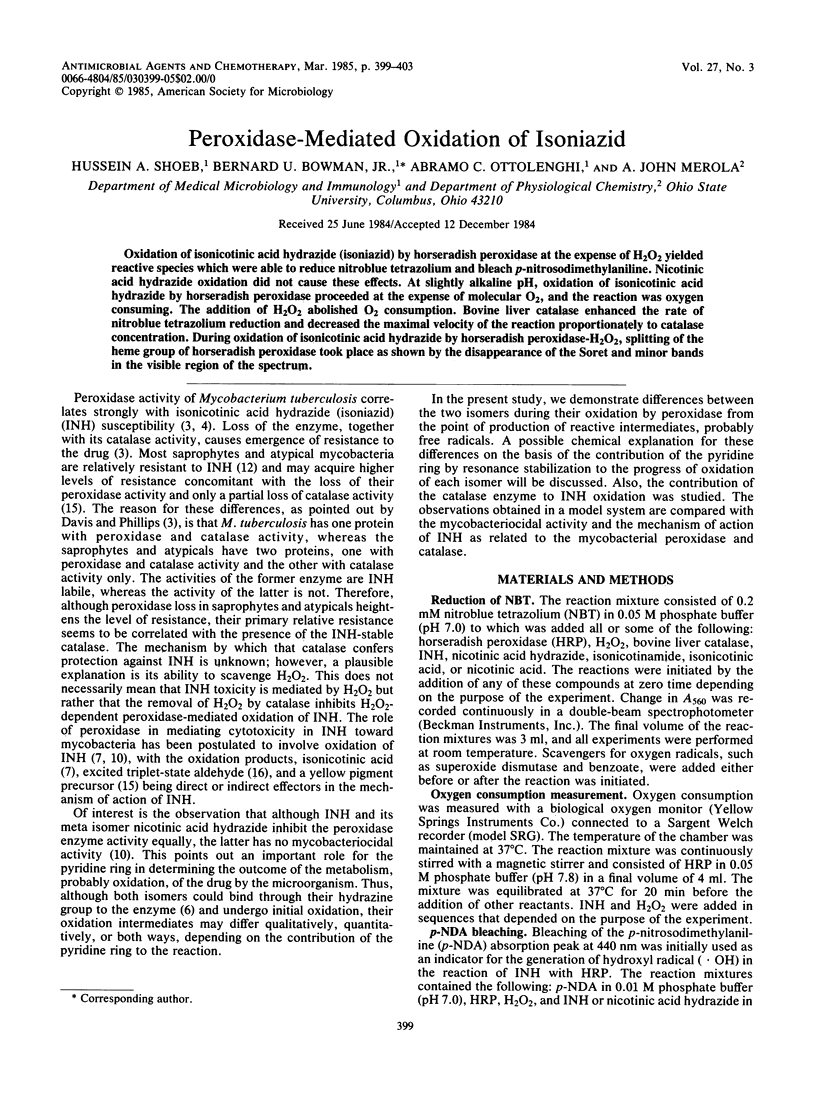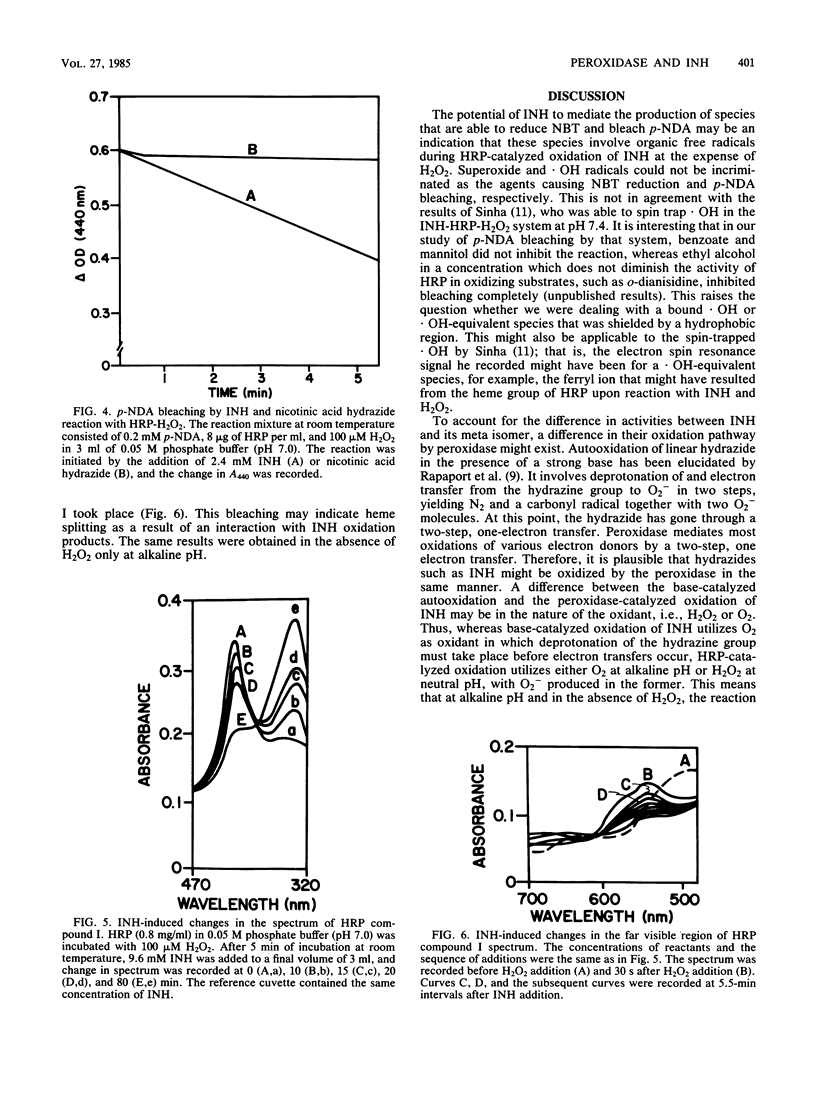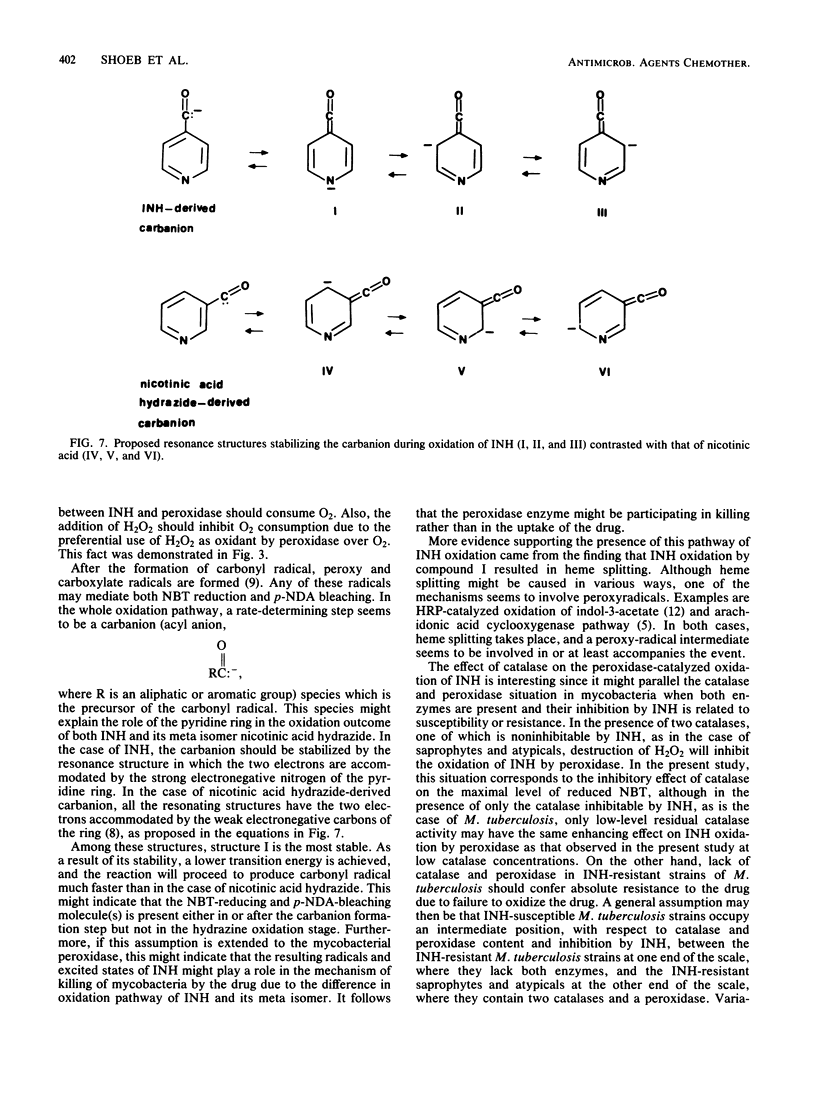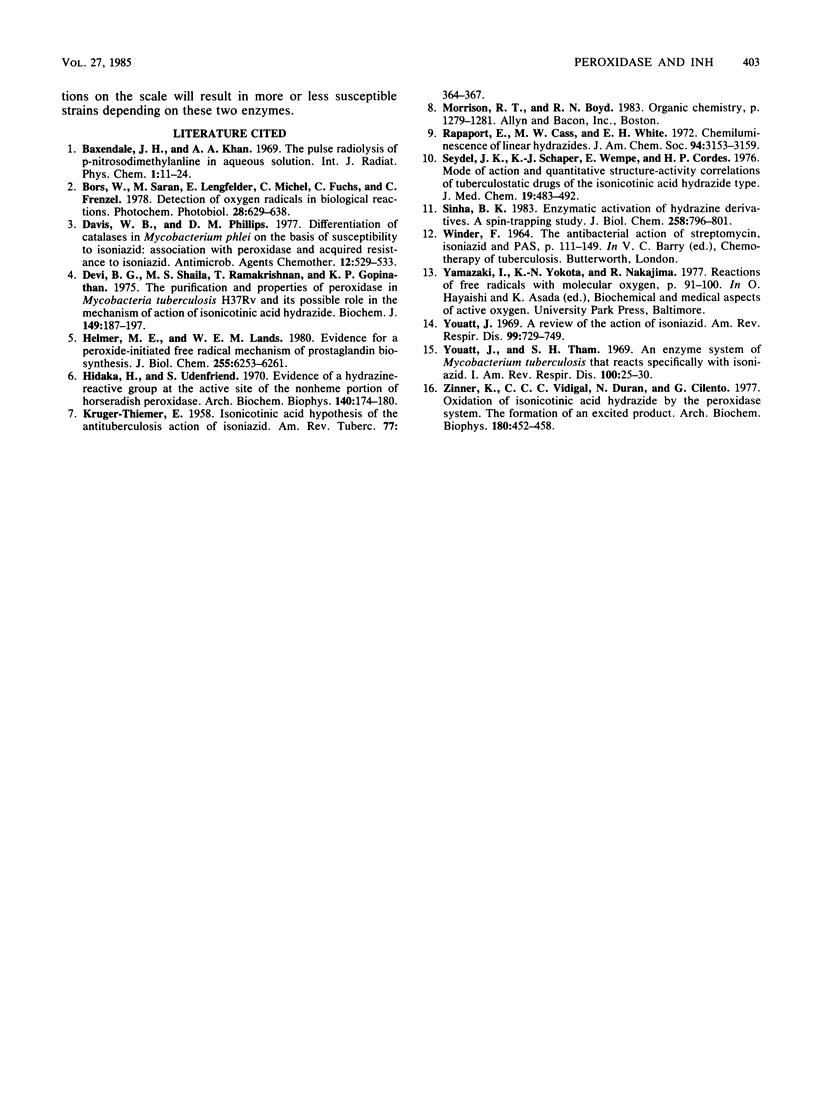Abstract
Oxidation of isonicotinic acid hydrazide (isoniazid) by horseradish peroxidase at the expense of H2O2 yielded reactive species which were able to reduce nitroblue tetrazolium and bleach p-nitrosodimethylaniline. Nicotinic acid hydrazide oxidation did not cause these effects. At slightly alkaline pH, oxidation of isonicotinic acid hydrazide by horseradish peroxidase proceeded at the expense of molecular O2, and the reaction was oxygen consuming. The addition of H2O2 abolished O2 consumption. Bovine liver catalase enhanced the rate of nitroblue tetrazolium reduction and decreased the maximal velocity of the reaction proportionately to catalase concentration. During oxidation of isonicotinic acid hydrazide by horseradish peroxidase-H2O2, splitting of the heme group of horseradish peroxidase took place as shown by the disappearance of the Soret and minor bands in the visible region of the spectrum.
Full text
PDF




Selected References
These references are in PubMed. This may not be the complete list of references from this article.
- Bors W., Saran M., Lengfelder E., Michel C., Fuchs C., Frenzel C. Detection of oxygen radicals in biological reactions. Photochem Photobiol. 1978 Oct-Nov;28(4-5):629–638. doi: 10.1111/j.1751-1097.1978.tb06982.x. [DOI] [PubMed] [Google Scholar]
- Davis W. B., Phillips D. M. Differentiation of catalases in Mycobacterium phlei on the basis of susceptibility to isoniazid: association with peroxidase and acquired resistance to isoniazid. Antimicrob Agents Chemother. 1977 Oct;12(4):529–533. doi: 10.1128/aac.12.4.529. [DOI] [PMC free article] [PubMed] [Google Scholar]
- Devi B. G., Shaila M. S., Ramakrishnan T., Gopinathan K. P. The purification and properties of peroxidase in Mycobacterium tuberculosis H37Rv and its possible role in the mechanism of action of isonicotinic acid hydrazide. Biochem J. 1975 Jul;149(1):187–197. doi: 10.1042/bj1490187. [DOI] [PMC free article] [PubMed] [Google Scholar]
- Hemler M. E., Lands W. E. Evidence for a peroxide-initiated free radical mechanism of prostaglandin biosynthesis. J Biol Chem. 1980 Jul 10;255(13):6253–6261. [PubMed] [Google Scholar]
- Hidaka H., Udenfriend S. Evidence of a hydrazine-reactive group at the active site of the nonheme portion of horseradish peroxidase. Arch Biochem Biophys. 1970 Sep;140(1):174–180. doi: 10.1016/0003-9861(70)90020-2. [DOI] [PubMed] [Google Scholar]
- Seydel J. K., Schaper K. J., Wempe E., Cordes H. P. Mode of action and quantitative structure-activity correlations of tuberculostatic drugs of the isonicotinic acid hydrazide type. J Med Chem. 1976 Apr;19(4):483–492. doi: 10.1021/jm00226a007. [DOI] [PubMed] [Google Scholar]
- Sinha B. K. Enzymatic activation of hydrazine derivatives. A spin-trapping study. J Biol Chem. 1983 Jan 25;258(2):796–801. [PubMed] [Google Scholar]
- THIEMER-KRUGER E. Isonicotinic acid hypothesis of the antituberculous action of isoniazid. Am Rev Tuberc. 1958 Feb;77(2):364–367. doi: 10.1164/artpd.1958.77.2.364. [DOI] [PubMed] [Google Scholar]
- Youatt J. A review of the action of isoniazid. Am Rev Respir Dis. 1969 May;99(5):729–749. doi: 10.1164/arrd.1969.99.5.729. [DOI] [PubMed] [Google Scholar]
- Youatt J., Tham S. H. An enzyme system of Mycobacterium tuberculosis that reacts specifically with isoniazid. I. Am Rev Respir Dis. 1969 Jul;100(1):25–30. doi: 10.1164/arrd.1969.100.1.25. [DOI] [PubMed] [Google Scholar]
- Zinner K., Vidigal C. C., Durán N., Cilento G. Oxidation of isonicotinic acid hydrazide by the peroxidase system. The formation of an excited product. Arch Biochem Biophys. 1977 Apr 30;180(2):452–458. doi: 10.1016/0003-9861(77)90059-5. [DOI] [PubMed] [Google Scholar]


